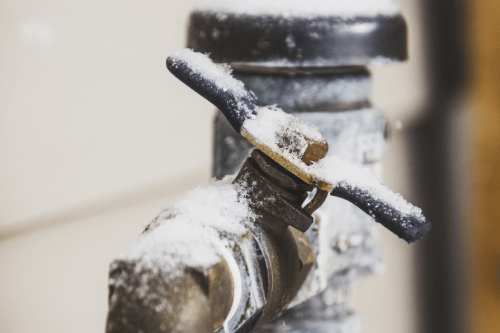Preventing Frozen Plumbing in Winter: Critical Advice
Preventing Frozen Plumbing in Winter: Critical Advice
Blog Article
Were you in search of facts and techniques concerning Prevent Frozen Pipes ?

Winter can ruin your pipes, especially by freezing pipes. Below's just how to avoid it from happening and what to do if it does.
Intro
As temperatures decline, the threat of icy pipes rises, potentially bring about expensive fixings and water damage. Recognizing how to avoid icy pipelines is important for homeowners in chilly environments.
Recognizing Frozen Pipes
What triggers pipelines to freeze?
Pipelines ice up when subjected to temperature levels listed below 32 ° F (0 ° C) for extended periods. As water inside the pipelines ices up, it expands, taxing the pipe walls and possibly causing them to rupture.
Dangers and damages
Frozen pipelines can cause water supply disruptions, residential property damages, and expensive repair work. Burst pipelines can flood homes and cause extensive architectural damages.
Indicators of Frozen Water Lines
Determining frozen pipes early can prevent them from bursting.
Exactly how to recognize frozen pipes
Seek decreased water flow from taps, uncommon odors or noises from pipes, and visible frost on subjected pipelines.
Avoidance Tips
Protecting prone pipelines
Wrap pipes in insulation sleeves or utilize heat tape to shield them from freezing temperature levels. Focus on pipes in unheated or external locations of the home.
Heating strategies
Keep indoor spaces effectively heated up, specifically areas with plumbing. Open up cupboard doors to enable warm air to flow around pipes under sinks.
Safeguarding Exterior Plumbing
Garden hoses and outdoor faucets
Disconnect and drain pipes garden tubes before winter months. Install frost-proof spigots or cover outdoor faucets with shielded caps.
What to Do If Your Pipelines Freeze
Immediate activities to take
If you believe icy pipelines, maintain taps available to alleviate pressure as the ice melts. Utilize a hairdryer or towels taken in warm water to thaw pipes slowly.
Long-Term Solutions
Structural modifications
Think about rerouting pipelines away from exterior walls or unheated locations. Include added insulation to attic rooms, basements, and crawl spaces.
Upgrading insulation
Invest in premium insulation for pipes, attic rooms, and wall surfaces. Correct insulation aids preserve constant temperature levels and minimizes the risk of frozen pipelines.
Conclusion
Protecting against icy pipes requires positive procedures and fast feedbacks. By understanding the causes, signs, and preventive measures, property owners can safeguard their plumbing throughout winter.
6 Proven Ways to Prevent Frozen Pipes and Protect Your Home
Disconnect and Drain Garden Hoses
Before winter arrives, start by disconnecting your garden hoses and draining any remaining water. Close the shut-off valves that supply outdoor hose bibs and leave the outdoor faucet open to allow any residual water to drain. For extra protection, consider using faucet covers throughout the colder months. It’s also important to drain water from any sprinkler supply lines following the manufacturer’s directions.
Insulate Exposed Pipes
Insulating your pipes is an effective way to prevent freezing. Pipe insulation is readily available at home improvement stores and is relatively inexpensive. Pay close attention to pipes in unheated areas such as the attic, basement, crawl spaces, or garage. Apply foam insulation generously to create a buffer against the cold. You can also wrap your pipes in heat tape or thermostat-controlled heat cables for added warmth.
Seal Air Leaks
Inspect your home for any cracks or openings that could let in cold air. Seal any holes around the piping in interior or exterior walls, as well as the sill plates where your home rests on its foundation. Additionally, make sure to keep your garage door closed unless you’re entering or exiting. Leaving it open creates a significant air leak that can lead to frozen pipes.
Allow Warm Air Circulation
During cold snaps, it’s essential to allow warm air to circulate evenly throughout your home. Leave interior doors ajar to promote better airflow. Open kitchen and bathroom cabinets to help distribute heat consistently around the rooms. If you have small children or pets, be sure to remove any household chemicals or potentially harmful cleaners from open cabinets for safety.
Let Faucets Drip
A small trickle of water can make a big difference in preventing ice formation inside your pipes. When temperatures drop significantly, start a drip of water from all faucets served by exposed pipes. This continuous flow helps prevent the water from freezing. Additionally, running a few faucets slightly can relieve pressure inside the pipes, reducing the chances of a rupture if the water inside does freeze.
https://choateshvac.com/6-proven-ways-to-prevent-frozen-pipes-and-protect-your-home/

I was made aware of that write-up on Prevent Frozen Pipes from a pal on another web property. Don't hesitate to pause to distribute this blog if you liked it. Thanks so much for going through it.
Call Today Report this page